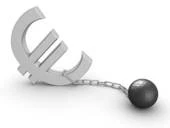1. Got blasted out- The boss, the one whom you respected, dressed you down in one of project meeting and to make matters worse, he was not in the picture of the issue and wrongly point the finger at you. When he realized and found it a few days later, he apologized in front of the same group. That was the right thing for the boss to do and it taught us that humility is a good thing and important to upkeep oneself.
The recent issue in Leading Afghanistan: Lessons from a US Four-Star Resignation
From General McChrystal: the importance of accepting responsibility for our actions.
From President Obama: when a handpicked, high-profile, high-potential subordinate acts out of accordance with established rules of conduct, it's important to take the same actions we would with a more junior employee.
From these men, we can learn the value of humility. All modeled real humility in their responses — and that's a quality we can never see too much of in our leaders
2. Mediocre appraisal- When you received your yearly mediocre appraisal and inquired why, you were told that what you were working on wasn’t that impressive so nobody got excited when your name brought up. That’s when you have to learned to take chance and risk on high-visibility designated post and the major tasks you have assigned or task to. That will changed the entire trajectory of your future career and if you are NOT noticed at the top.
3. You are illiterate? -- After reading your first ever attempt at writing a product specification or venture proposal, the manager-in-charge called you illiterate and asked how you ever graduated university. Sounds hurting and was he right? Nevermind whether right or wrong, as that’s when you learned the importance of writing be it in technical, service or in business field ? We all need to be able to write fluently and spell correctly and professionally. No "singlish" and better spell check before you press the "go" button if you are fond of writing long emails, trying to impress the readers. I find it amusing and shocking when a senior level manager has been expressing his email message with improper mixed of poor grammars, wrong choice of words, out-of-context and irrelevance subject content. End of the email, you got confuse and try to understand what is he trying say. Probably hear him out verbally will be easier.
4. Micromanager boss- You tried talking to him; that didn’t help. You tried talking to your management; that didn’t help. So you thought of leaving the company. You learned that the boss is always more important to the company than you are. It was also that important kick at the back that you needed to get out and try something new and hopefully for the better of your future.
5. Customer disaster-- You were relatively new to technical details when a manufacturing delay caused your biggest customer’s production line to be shut down. They weren’t pleased, to say the least. That’s when you realized this was the best opportunity to prove your value to the customer. You fought for them and did it with transparency. When your company delivered, you would have had a customer for life.
6. Getting laid off -- Yes, it might happened to anyone, you or me. Your first instinct might be to feel rejected and a pressing desire to lash out in anger. But all of us need to face such and fight it down and acted about as poised as we all could. It may turned out to be the right move and a blessing in disguise. That’s when you learned that everything happens for a reason and, when one door closes, another opens.
7. High-visibility crisis -- As head of a department for a company, you may experienced your first high-visibility product crisis - say a bug in one of your computer programme and that had already being used in tens of thousands of computers. That was the first of many experiences that would have taught you crisis management.
8. Abusive CEO-- Your boss and CEO ripped you apart a few times. But you were not alone and you may loved the company and your job, so you hung in there. Lo and behold, the board eventually fired him (him is the boss, for performance reasons, of course). For you, that proved an old Japanese proverb: “If you wait by the river long enough, you’ll see the body of your enemy float by.”
9. CEO called you out--- After a meeting where you blew a gasket, your CEO took you aside and explained that you had shot yourself in the foot and how it hurt your credibility. You were probably so impressed with his willingness to confront you that it got you thinking about your bullying ways and the merits of being straightforward with your own direct staff.
10. Branding disaster--- You have to put your neck on the line to deliver a complete rebranding of a company by a specific announcement date. But when one of the consultants let you down bigtime, you may have to dig in, 24×7, and make it happen. The lesson was stay on top of your vendors or competitors. Regardless of the relationship, they may not have the same skin in the game that you do.














